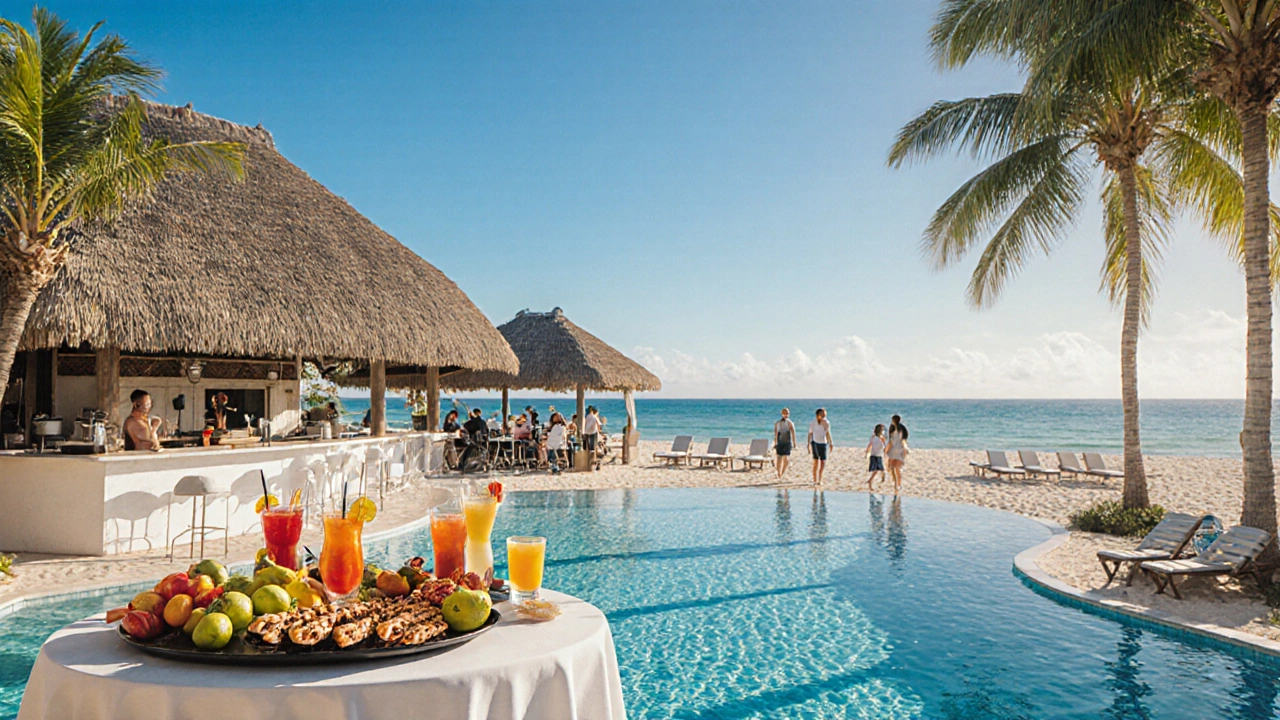Inclusive Hotel Cost: What You Really Pay for All‑Inclusive Stays
When you hear Inclusive Hotel Cost, the total amount you pay for a stay that bundles lodging, meals, drinks and most on‑site amenities into one price. Also known as all‑inclusive price, it helps travelers avoid surprise charges at the bar or spa. But how does this number break down? Think of it as a bundle that covers three core parts: the room, the food‑and‑beverage plan, and extra perks like activities or Wi‑Fi. Understanding each piece lets you compare offers without getting fooled by fancy marketing.
Breaking Down the Bundle
First, let’s look at All‑Inclusive Hotels, properties that require you to pay upfront for lodging, meals, drinks and most amenities. These hotels require a prepaid package, which means you won’t see a separate check for a dinner you ate or a cocktail you ordered. The package price usually includes a set Beverage Allowance, a daily limit on alcoholic and non‑alcoholic drinks covered by the all‑inclusive fee. If you exceed that limit, you might pay extra, which brings us to the next big player: Hidden Fees, charges that aren’t advertised upfront, such as premium brand liquors, spa treatments, or premium Wi‑Fi. Inclusive hotel cost encompasses room rates, meals and drinks, but hidden fees influence the final amount you actually spend. A common mistake is assuming the all‑inclusive label means “everything is free.” In reality, the cost structure often looks like this: base price (room + standard meals + basic drinks) + optional extras (premium liquor, special excursions, upgraded rooms). Knowing this helps you avoid unpleasant bill surprises.
Now, let’s talk about Travel Budgeting, the process of planning how much you’ll spend on a trip, including accommodation, food, transport and activities. When you have a clear picture of the inclusive hotel cost breakdown, budgeting becomes a lot simpler. You can allocate a portion of your overall budget to the base package, then set aside a smaller reserve for possible hidden fees. For example, if the advertised all‑inclusive rate is £150 per night, you might budget an extra £20‑£30 for premium drinks or spa services. This approach keeps your total spend within a realistic range and prevents last‑minute panic when the bill arrives.
Regional price variations also play a big role. Resorts in the Caribbean or Mediterranean tend to have higher inclusive hotel costs than those in Eastern Europe or the UK, partly because of local taxes, import duties on alcohol, and the cost of importing fresh ingredients. However, lower‑cost destinations often charge extra for things that higher‑end resorts include, like airport transfers or daily activities. Understanding where you’re going helps you anticipate which hidden fees might pop up. Finally, customer expectations shape how inclusive hotel cost is perceived. Travelers who prioritize a hassle‑free experience often accept higher base rates in exchange for fewer add‑ons. Others who enjoy customizing their stay look for properties that clearly list what the all‑inclusive fee covers and where they can splurge. By matching your preferences to the right pricing model, you turn the inclusive hotel cost from a vague number into a useful tool for planning your perfect getaway. In the list below you’ll find fresh takes on all‑inclusive pricing, drink policies, budgeting tricks, and real‑world examples that show exactly how to get the most value from your next stay. Browse on to see which insights match your travel style and start planning a trip where the cost is clear and the experience unforgettable.
All-Inclusive Trip Cost Guide 2025
Learn how to calculate the all‑inclusive trip cost, see price ranges by destination, and get expert tips to save on your next vacation.
- Oct, 16 2025
- 0 Comments
